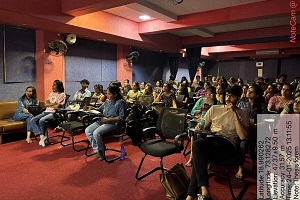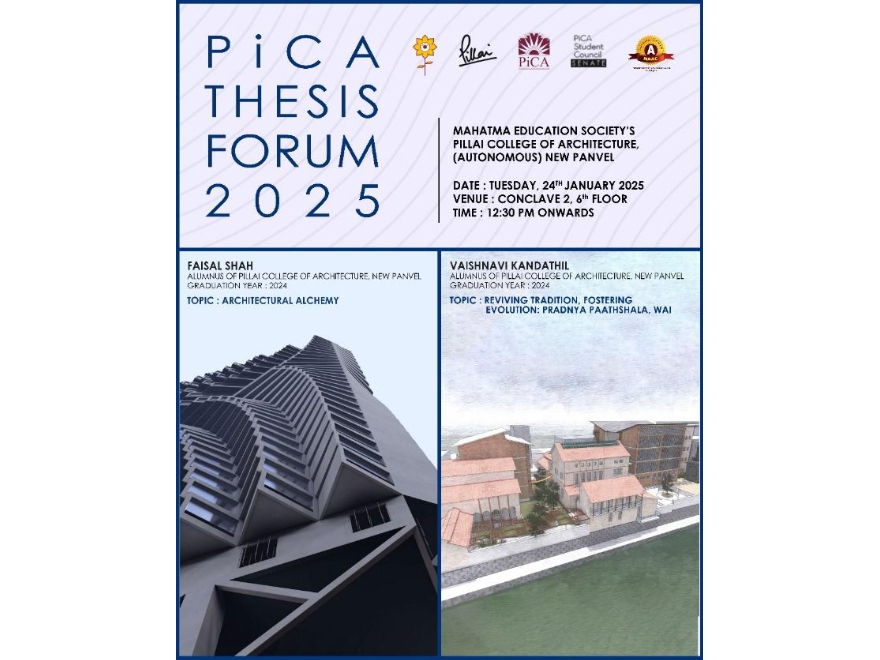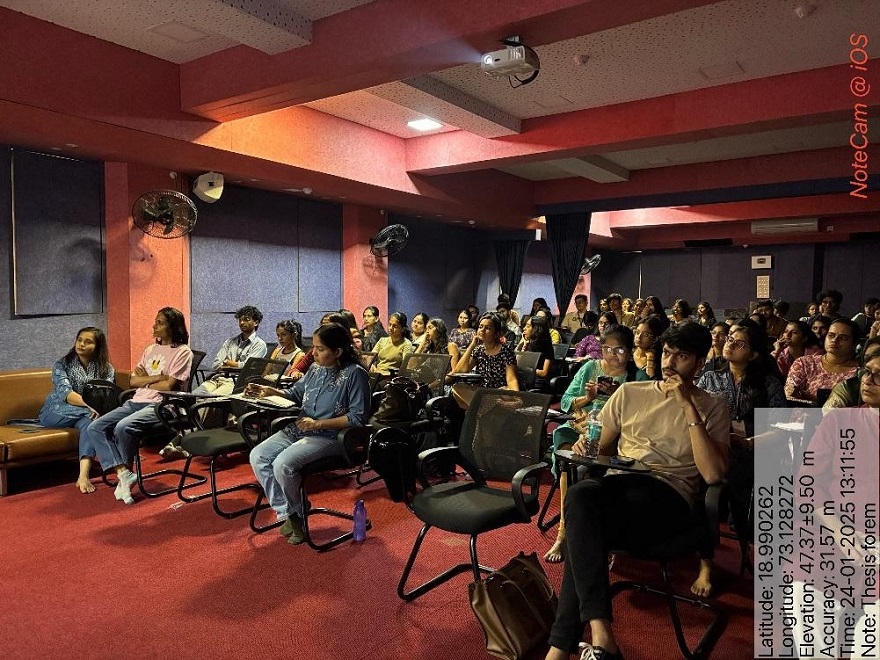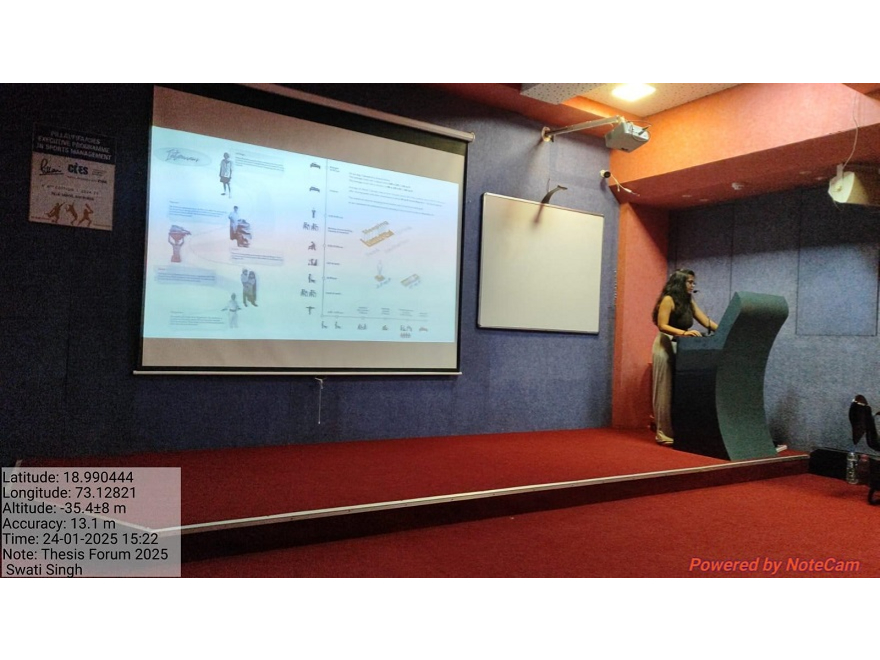| Subject | Design Dissertation |
| Year | 5th |
| Session | 2024-25 |
| Date | 24th January, 2025 |
| Time | 12:30 p.m. onwards |
| Venue | 5th year studio |
| No. of students | 25 |
| Faculty | Coordinator: Prof. Ajita Deodhar Attendees: Faculty members of PiCA |
| Speakers invited | Sudeshna Chatterjee (2019-2024 batch) - The Unseen in Culture : A Fresh Perspective for Sonajhuri Haat Swati Singh (2019-2024 batch) - Dignified living for migrant workers Faisal Shah (2019-2024 batch) - Architectural Alchemy Vaishnavi Kandathil (2019-2024 batch) - Reviving Tradition, fostering evolution: Pradnya Pathshala, Wai |
The second session of the PiCA Thesis Forum 2025 featured four graduating students from the 2019–2024 batch. They presented their final-year design dissertations and shared how they developed their topics and ideas. The session helped current students learn more about the design process and the thinking behind different types of architectural projects.
Sudeshna Chatterjee – Thesis Topic: The Unseen in Culture: A Fresh Perspective for Sonajhuri Haat
Sudeshna spoke about her thesis, which looked at Sonajhuri Haat, a market set in a forested area. She explained how the market has worked in a spontaneous and informal way for more than 10 years, and yet, users follow a certain order even though nothing is fixed. Her main question was how to design for such chaos without taking away the heart of it.
She studied the elements and layout of the market in detail, such as the grid patterns used by vendors and the temporary structures. Sudeshna explained that when the project is smaller, it’s important to look closely at each and every detail. Her proposal included different types of modules—some fixed and some movable—to support the ever-changing nature of the market. She also looked at how people use and move through the space, using views and details to guide her design.
Swati Singh – Thesis Topic: Dignified Living for Migrant Workers
Swati’s thesis focused on migrant workers, who often don’t have proper housing and are left out of most urban planning. She looked at how architecture can provide dignified living spaces that not only give shelter but also respect the identity and needs of the people living there.
Her research involved studying the lives of migrant workers, their social conditions, and current housing policies. She then developed a design that supported community living, aiming to give workers a sense of belonging and safety. Swati focused on making spaces that are inclusive, practical, and sensitive to the users, showing how even basic housing can have a positive emotional impact.
Faisal Shah – Thesis Topic: Architectural Alchemy
Faisal started his presentation with a short interactive session, encouraging students to think about how to start a thesis. He gave three useful tips:
- Write down your goal clearly
- Ask questions about your site
- Learn how different systems work
His thesis was based on a MHADA housing project, and he used it to explore how design decisions come from both architectural values and system requirements. He introduced a method called the Architecture Matrix, where he compared different ideas with building systems.
Faisal explained that for him, the program itself becomes the architecture—meaning that the function and layout of the building are closely tied to how people will actually use the space. His design process involved both creative thinking and technical problem-solving, showing how they work together.
Vaishnavi Kandathil – Thesis Topic: Reviving Tradition, Fostering Evolution: Pradnya Pathshala, Wai
Vaishnavi’s thesis looked at how to preserve traditional architecture while making it work for modern educational needs. She chose Pradnya Pathshala in Wai, an old educational institution, as her site. She explained how traditional buildings have cultural value but also need to change with time.
Her design carefully combined the old and the new—keeping the heritage of the site while adding new spaces and functions that suit today’s learning methods. She worked on making sure the new design did not take away from the original character of the place. Vaishnavi’s work was a good example of how architecture can honor tradition while still evolving.
Conclusion
This session brought out a wide range of ideas—from designing for informal markets and migrant housing to mixing systems with creativity and reviving old institutions. Each student had a unique approach, and they all showed how important it is to understand your site, your users, and your purpose deeply.
The session ended with thoughtful questions and answers, and many students left with fresh ideas for their own thesis journey.
The session ended with a Q&A, where students asked questions about the challenges and methods used in the projects. The forum highlighted the importance of understanding context, being flexible in design, and involving the community in architectural projects. It inspired students to think in detail about their own research and designs.






